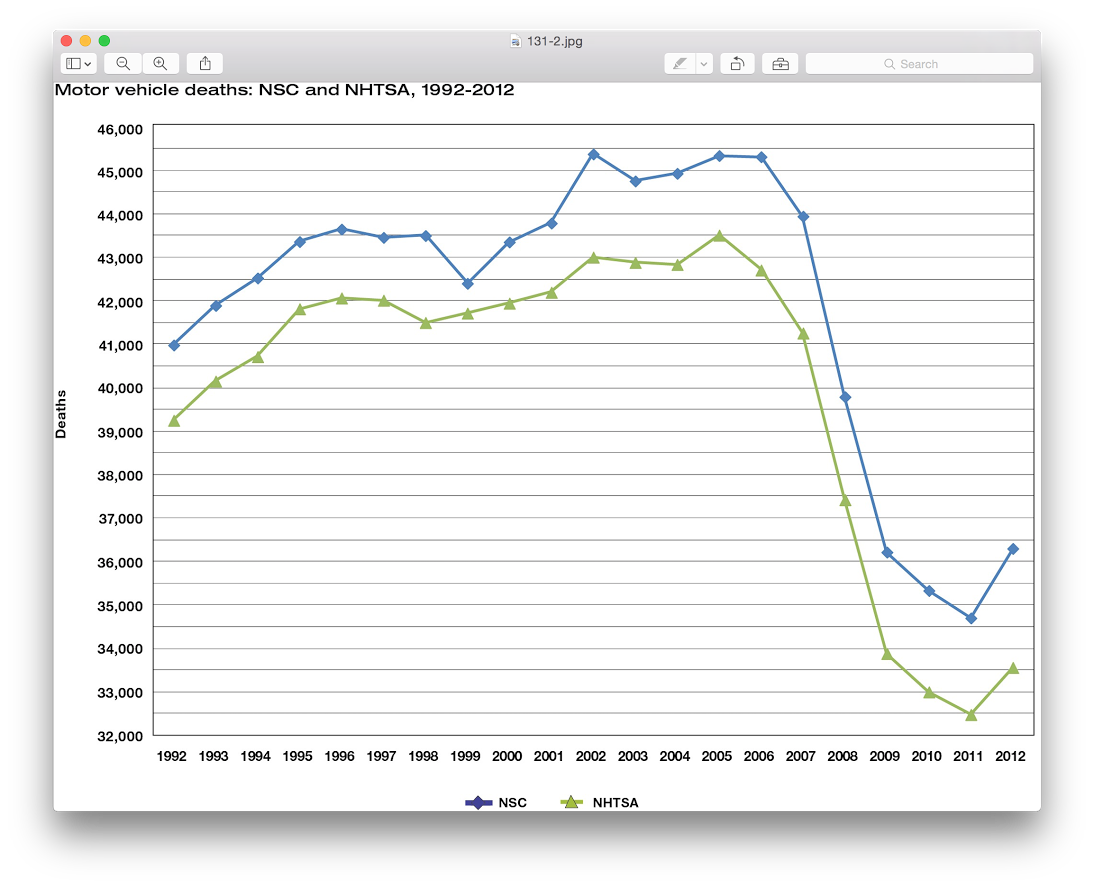NY City Officer Dies of Crash Injuries – Uncounted by NHTSA
January, 2015
Thomas Choi, 62, is the first officer to die in the line of duty in the 81-year history of MTA Bridges and Tunnels, also known as the Triborough Bridge and Tunnel Authority.
Choi was struck when he was removing barrels while reopening the Brooklyn-bound lower level of the bridge on Oct. 20, 2013. The lower level of the bridge is closed on weekends from midnight until about 8 a.m.
He was treated at Staten Island University Hospital and Seaview Rehabilitation Center but never regained consciousness, the MTA said.
“Officer Choi dedicated himself to serving and protecting everyone who travels the bridges and tunnels that unite New York, and all of us at the MTA join in mourning him,” MTA Chairman and CEO Thomas Prendergast said in a news release. “We send our deepest condolences to his family.” See
NHTSA Does Not Count Such Crash Deaths
Would this Officer’s death be counted by NHTSA in FARS 2013 files when the crash occurred, or in the 2014 files when this Officer died a year later? The answer from NHTSA is that in neither year would his death of crash injuries be counted. NHTSA only counts deaths of crash injured people if they die within 30 days of the crash. So how many crash victims die after 30 days and are not counted by NHTSA? The National Safety Council estimates that about 800 – 1,000 crash victims die of their “in traffic” injuries more than 30 days after the crash.


Overall traffic fatalities fell last year to 248, from 293 the previous year, according to preliminary data from the city. There were 20 bicyclist fatalities in 2014, an increase from 12 deaths in 2013, and 37 motorcyclist fatalities last year, down from 42 deaths in 2013. Motor vehicle fatalities remained the same, with 59 deaths in each year.
The decline in pedestrians’ deaths comes as the city continues to put in place Mayor Bill de Blasio’s Vision Zero plan, a set of proposals intended to eliminate traffic deaths. Modeled after a Swedish approach that treats all road deaths and serious injuries as inherently preventable, the plan has an ambitious goal of eliminating traffic deaths by 2024. The city lowered its default speed limit to 25 miles per hour, from 30 m.p.h., and increased enforcement of speeding laws, among other initiatives.
“There is no question we are moving this city in the right direction, thanks to stepped up enforcement by the N.Y.P.D., strong traffic safety measures by the Department of Transportation, new laws passed by our legislators and the work of New Yorkers fighting for change,” the mayor said in a statement this week.” See
Let us work in the new year so that fewer crash victims occur. A good start for NHTSA would be for NHTSA to do better at counting crash deaths.
![]()
![]()
